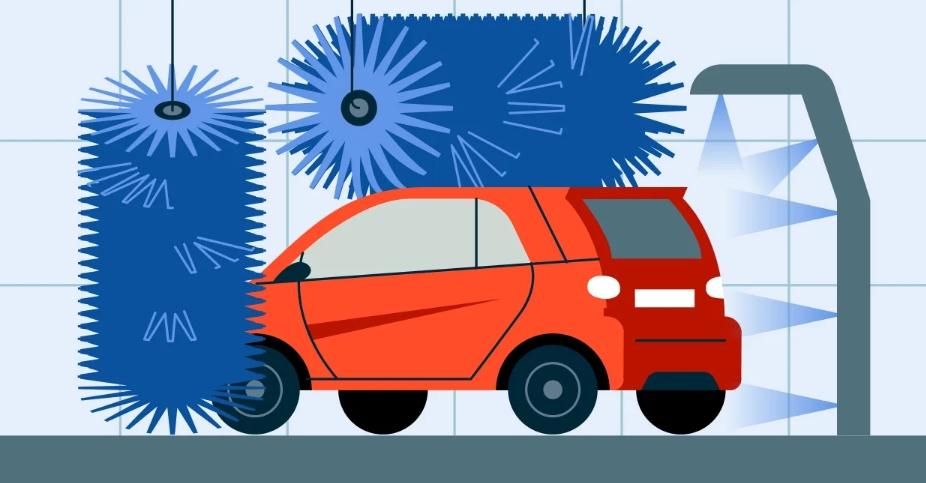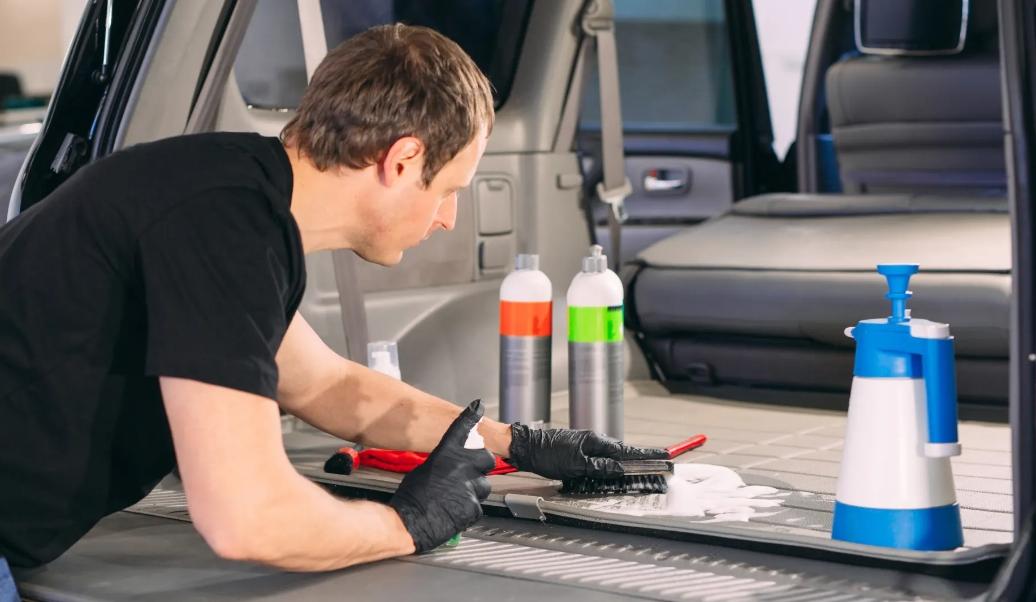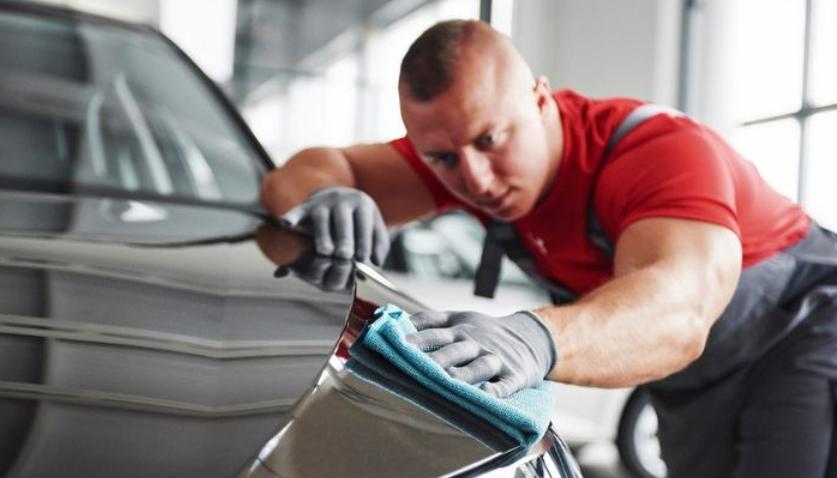Every owner of a vehicle at least once in his life asked himself the question: “How to clean the car engine from oil, dirt and other deposits? Indeed, over time, a lot of these “by-products” are deposited on the surface of the engine body. In addition to the fact that this phenomenon is unpleasant from an aesthetic point of view – heavy contamination can disrupt the temperature operation of the engine.
Why do I have to wash the main parts of the car?
It is customary for every vehicle, just as it is for humans, to follow certain rules of “hygiene”. This is to ensure that the body of the vehicle is not subject to corrosion and is resistant to external influences. In addition, the power plant and gearbox dissipate heat not only through the coolant. The outer metal surfaces of their housings play an important role in this process. If they get covered with a layer of dirt and oil, thermal regulation can be impaired.
In addition to the power unit, the radiator, through which the coolant gives off its heat to the surrounding atmosphere, can be contaminated. Insects and dirt stuck on the cells complicate the heat transfer process.
It should not be forgotten that engine parts undergo wear and tear during operation. This means that metal particles get into the engine oil. Unfortunately, not all of them are removed by the oil filter. Some of the debris settles in the engine crankcase. The oil composition, circulating through the system, picks them up again and spreads them all over the engine’s lubrication system. Getting on the contact surfaces, the metal “dust” gradually destroys them. The consequences are obvious – it reduces the engine’s resource, disrupts its normal operation, and causes loss of power. That is why when changing oil at home motorists try to drain it out of the system completely. Some craftsmen manage to remove the most contaminated oil residues from the crankcase with a syringe and a tube afterwards.
Contamination of the under-hood and the engine may adversely affect the operation of the electronics and the ignition system. In addition, if the oil seal is leaking somewhere in the engine, this malfunction is difficult to detect because of the thick layer of dirt and oil deposits. You should also be aware that when the power unit is dirty, the risk of fire increases. Oil deposits can catch fire if the exhaust fumes break through. An accidental spark can also cause such fatal consequences. All of the above arguments lead to the obvious conclusion: periodically cleaning and flushing the main components of the car is as important as for its owner to take regular showers.
Another reason to wash the engine and the whole underhood space is selling the car. In this case, pre-sale preparation is an essential attribute that allows the buyer to assess all the advantages of the proposed vehicle.
Washing up products
Every car, like a woman, needs proper care. Most motorists know how to tidy up the interior of a car. However, not everyone knows how to clean the engine from oil and dirt deposits. To do this, it is not enough to take a container with warm water, a rag, a brush. In addition, you need at least special detergents. In the case of stale and thick deposits, such a set of tools is not enough.
To solve this problem, they often resort to the use of installations that deliver cleaning compounds under strong pressure, which in itself is not safe. The thing is that the strong jet may mechanically damage electrical wiring, gaskets and other elements. As a result – engine failure.
To clean the engine case from heavy dirt, many experienced drivers use diesel fuel or kerosene. It is better to wash with kerosene – there is less chance of fire. Keep in mind: if you use diesel or kerosene for washing, acrid smoke will be released from the surface of the engine body. This will happen after the engine has warmed up. Gasoline as a cleaning agent is unacceptable because of the high probability of ignition. In addition, gasoline fumes are explosive.
Some drivers try to adapt various household detergents for this purpose, and they sometimes succeed quite well. But, again, there can be unintended consequences. For example, when using compositions containing chemically active elements – alkalis or acids – parts made of plastic and rubber may get damaged. There is a possibility of oxidation of metal parts.
Today there are a sufficient number of products that allow you to properly rinse off the surface of the engine dirt and oil film, so it is best to use them. There are foreign and domestic compositions on the market – in the form of gel, foam, liquid or aerosol. Each of them has its own rules of application, described by the manufacturer.
How to wash the engine and underhood properly
Before you start cleaning the engine and surrounding components – from dust, oil and dirt, you need to follow a few simple rules, and the very cleaning and washing should be performed in a certain sequence.
- To begin with it is necessary to prepare a few improvised means: rubber gloves, polyethylene and foil, tape or duct tape, a rag, a brush (only not made of metal), a sponge. A detergent also needs to be purchased.
- It is better to clean the engine in warm, dry weather, so the excess moisture will evaporate faster after washing from under the hood.
- Before you wash the power unit, you need to let it cool down to an acceptable temperature – from 50 to 60 ° C. If the engine was cold – then you need to warm it up to the same temperature.
- It is necessary to remove the terminals from the battery, after that it is advisable to remove it from under the hood.
- Parts such as the tumbler, ignition coil, air filter, terminals and other components of electrical connections, depending on the model and design of the engine, must be protected from moisture. This is done with polyethylene, foil, tape or duct tape.
- It is required to moisten all dirty surfaces with a small amount of water. After that, a cleaning compound is applied. If it is an aerosol – it is simply sprayed on all surfaces that need cleaning. If it is a prepared solution – you can spray it with a spray gun or apply it with a sponge. In hard-to-reach places, it is better to use a small brush, such as a toothbrush.
- After that, you need to wait a while until the cleaner comes into contact with the dirt. The time interval is usually specified in the instructions for use of the detergent.
- Finally, it is required to wash the entire underhood space, where the cleaning composition was applied. This should be done with extreme care, avoiding water to the places of electrical connections and others described above, even if they are protected with polyethylene or foil. A hose with a good stream of water is often used for this procedure. The end of the hose can be pinched with your fingers to create more pressure.
- After rinsing, the quality of the cleaning is checked. If some dirt is left somewhere, the procedure can be repeated again.
Well, your favorite “iron horse” became clean and tidy. True, it is impossible to start the engine and drive the car. The under-hood space needs drying. To do this, you need to lift the hood and dry the surfaces of parts under it with paper towels. You need to be especially careful to remove moisture in the area of elements protected with polyethylene or foil. Only after that you can remove the protective equipment.
After the initial drying, the moisture will evaporate for at least another 12 hours. Therefore, if possible, it is better to leave the car in the garage with the hood up until it dries. If water gets on the contacts or terminals, as a result of which they are oxidized, you can clean them with an aqueous solution of baking soda in the proportion of 1:1.
Flushing the lubrication system
It’s not just the engine housing and surrounding parts that need cleaning. Systems such as the cooling and lubrication systems also require periodic cleaning. This procedure must be carried out when the car owner has decided to use a new engine oil from a different manufacturer. Or the manufacturer is the same, but the viscosity and quality parameters are already different. In addition, over time in the oil system there are still products of oxidation, wear of parts, fouling. There are two ways to flush the oil system.
- The car is installed on a pit or a trestle. After that the old engine oil is drained through the drain plug. The so called flushing compound is poured into the throat. With it the engine should run for some time, specified in the instructions of the manufacturer of flushing oil. After that the flushing oil is also removed from the system.
- The old grease is not removed. It is filled with special detergent additives to clean the power plant. After that, the engine runs, as a rule, for a few minutes. More precise time is specified in the additive instructions. After stopping, the old oil is removed from the engine.
It is worth noting that the method of cleaning with flushing oil is softer and gentler for the power unit. The second one is tougher because of the strong aggressiveness of most additives. In any case, after flushing, you should immediately pour a new lubricant and replace the oil filter.
It is not recommended to get addicted to flushing the lubrication system without an absolute necessity. It is better to use the same brand of oil fluid, and replace it more often – not after 15 thousand kilometers, as the regulations say, but after 7-8 thousand.
Cleaning the cooling system
Over the course of operation, scale and salt deposits appear in the channels of the cooling system. This process is inevitable, as the antifreeze is constantly under stress due to sudden changes in temperature. Therefore, a periodic flushing of the cooling system is a necessary procedure. You can perform this work as follows:
- the used antifreeze is drained from the system;
- a mixture of distilled water and a small amount of vinegar is prepared in the required quantity;
- After that the engine runs for a certain time and then the flushing solution is drained out;
- new antifreeze is poured in its place.
For better cleaning of cooling ducts, it is better to use special agents. There are a sufficient number of them on sale – both domestic and foreign-made. Each comes with instructions for use.


